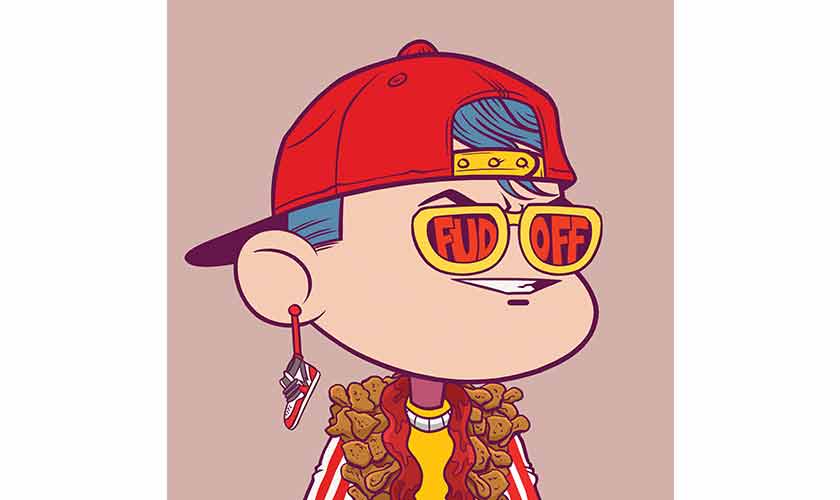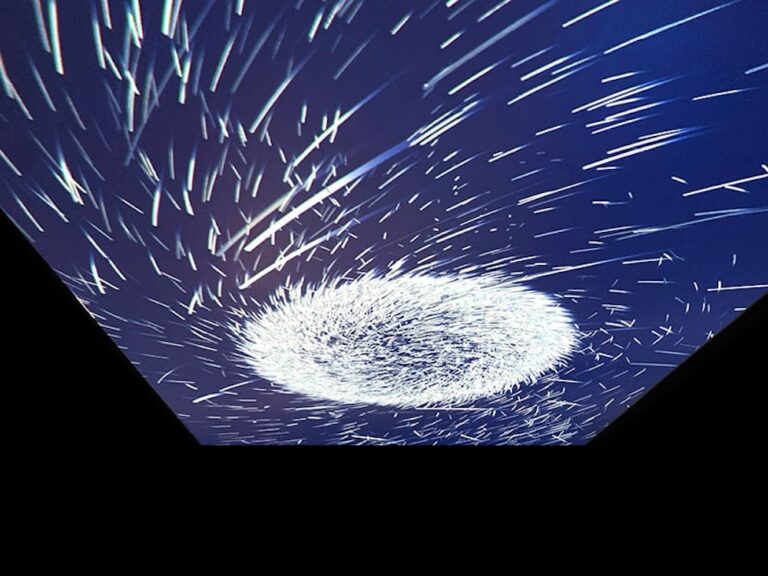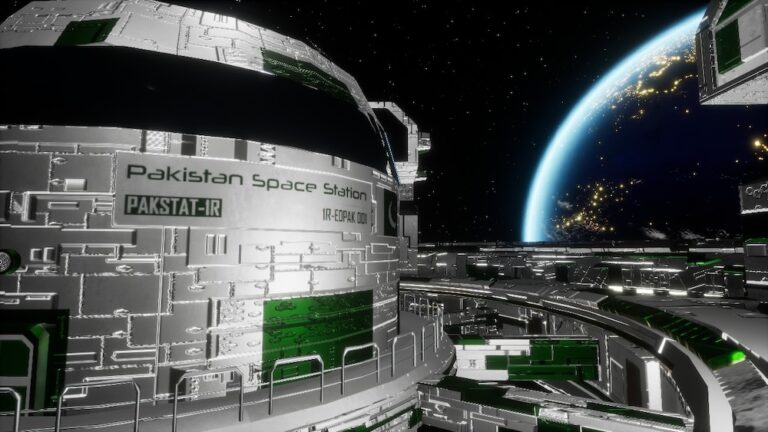
NFT +92 was a timely exhibition of a few minted works for only two days, curated by a crucial diaspora artist and creative director, Saks Afridi
In The Meaning of Things, published in 2001, AC Grayling writes about a qualitative survey conducted once to discover what teenagers and the youth thought about museums and art galleries. Unsurprisingly, it was found that most of them disliked such places, being suited to the taste of old and wealthy people. Nevertheless, with the population surge over the last few decades, the investigation mentioned above appears a bit passé. Young start-ups are sprouting from every walk of life, and creative practices exploring art/ design venues and ventures aren’t an exception.
Let us look at the Internet of Things as a perambulatory premise. Since the inception of Web 1.0, we have experienced information with one-way interaction, the graphic user interface (GUI) being very rudimentary and static. Ofoto led people to upload JPEG images, create albums and share them with friends. Flickr was built around the core idea of an online community in mind, rather than the idea of just selling prints. Flickr made it simple for people to tag or comment on one another’s images, thereby establishing the sense of software as a service, participation as collaboration and providing a rich user interface/ experience (UI/UX). With it began a new era in internet history—known as “the synchronised web” firmly established in Web 2.0’s vernacular. One can’t skip Deviant Art in this evolutionary process. Since Internet analysts have started questioning the monetary value of the content posted over the internet, it reclaims rewards not just as a User of the Internet but as the Producer of the Internet at the same time. However, the latter mentioned didn’t get any royalty for their multimedia content or the artwork per se — giant players like Metaverse, Google, Twitter and a few others did. NFTs (non-fungible tokens) seemingly hold answers to such questions, as they represent certification of ownership of digital assets on the block chain.
Within the last few years, we have seen exponential growth in several community platforms — Twitter Spaces, Reels and Discord being the recent ones most popular amongst the youth. We are already into the Metaverse and preparing for the next leap into the uncharted territory of Web 3.0. NFT +92 was a timely exhibition of a few minted works for only two days (March 28, 29), curated by a crucial diaspora artist and creative director, Saks Afridi. The spectacle happened with the immense support of the NFT community collaboration, especially Alter —an NFT company started by Zain Naqvi and NFTroar by Awais Ramzan. The ultimate crowd-puller pop-up show happened at an established yet conventional art space known as Ejaz Art Gallery Lahore — still, the crowd was mostly under 30.
As one approaches The Crystal Lota, rotating on the screen, one is instantly reminded of an idiom used to describe horse trading in politics. Nevertheless, the artist describes it as a reclamation project designed to reframe the narrative and celebrate the history of a utensil that has served us for centuries.
Woven Portals by Saks Afridi, is a collection of 100 artworks that blend the infinite geometry of Persian rugs with spaceship navigation interfaces. They are sometimes infused with engineering schematics and sprinkled with Arabic and Urdu Calligraphy. The best example of a newly explored generative art/ design is a gentle collaboration between tradition and technology exploring the underlying themes of sci-fi sufism.
A small collection of 1691 Broskees with beautiful dreamy pastel coloured graphics is not merely a picture for profile (PFP) crypto-collectables but also aims to bring sustainability to the NFT space. Another fantastic project displayed on the screen, titled DFans or Disappointed Fans, is based on the cricket fan, Sarim Akhtar, whose fuming expression meme after Asif Ali’s catch drop caught the attention of social media users. DFans, made in collaboration with Pakistan’s leading NFT auction site Alter, feature several original avatars bearing Akhtar’s iconic pose as collectables. On the other hand, The Bards is a fun medieval-themed series featuring elusive 1/1 individually customised characters with distinctive traits, personalities, jokes, puns, celebrities and stories.
Another fascinating project, Love & Fear, a collab of DMT LabsxRastah, decontextualised and reinterpreted South Asian heritage and artisanship. The garment shown in a surrealist animated sequence offers the successful amalgamation of the site where Western silhouettes and traditional eastern motifs, contemporary art and Mughal miniature and exodus stories are brought into the conversation.
A projection on the wall displays Seek — an interactive installation by Faisal Anwar that helps scientists create new methods to disseminate information into storytelling while bridging art with science, technology and nature.
The Trail and the Tale is a project by Fareeha Nisar. It takes one away from the usual hustle and bustle of urban life and proclaims an immersed and mesmerising fantasy world the artist imagines — not entirely forgetting to ride one’s representative vehicle. Deserted Dreams — revolves around minimalistic scenes of unexplored places, i.e., cold deserts, using photography as a form of expression and storytelling. A white lightbox enhances the artist’s passion. It helps him slow down and put everything into perspective. Khumais Idrees likes to be very attentive while capturing the flow of structures/ formations and light crossing the landscapes.
Lights for Long Drives, by Maheen, reminds one of quick, quiet transitory intervals by observing roadside lightmaps that might help the driver and the passenger to lighten up their moods — by re-configuring their thoughts during deep conversations throughout the long drives. Another digital artwork displayed is Light Streaks by Mohammad Nafay showcasing a lone wanderer’s journey pursuing beams of bright light across a surfeit of lands and distant horizons. Along similar lines, Shepherd — a series of hand-drawn digital paintings by Omer Gul, shows the explorer’s journey through unexplored and farfetched surreal places.
The powerful presence is felt in an animated project, Shame on You, by Musa Ijaz. The narrative talks about the existence of God and evil and poses subtle questions about a societal belief system, the concept of panopticons; simultaneously, the interaction and integration between human characters are rendered immaculately.
A collection of fantasy-based, hand-drawn NFT characters made by Imad Awan titled Strangers — consists of imaginary visitors from faraway fantastical spheres. Seeking Refuge by Amir Mirza is a light painting that combines multiple images uncovering various stages of meditative prayer suggesting a journey to enlightenment.
It has been said that the crypto space is fuelled by speculation. Still, it’s vital to understand that NFTs provide one with the opportunity to express oneself while also belonging to a community that shares collective values. As these norms develop, the value of one’s NFT generally grows.
The exhibition ran from March 28 to 29 at Ejaz Art Gallery Lahore.

A brilliantly curated exhibition delves into globalisation and cultural exchange themes Technology, generally linked with

Ejaz Art Gallery in Lahore recently exhibited the group show ‘Unity in Flux: The Ones

Abstract art, a genre that emphasizes non-representational forms and colors, has captivated audiences and art